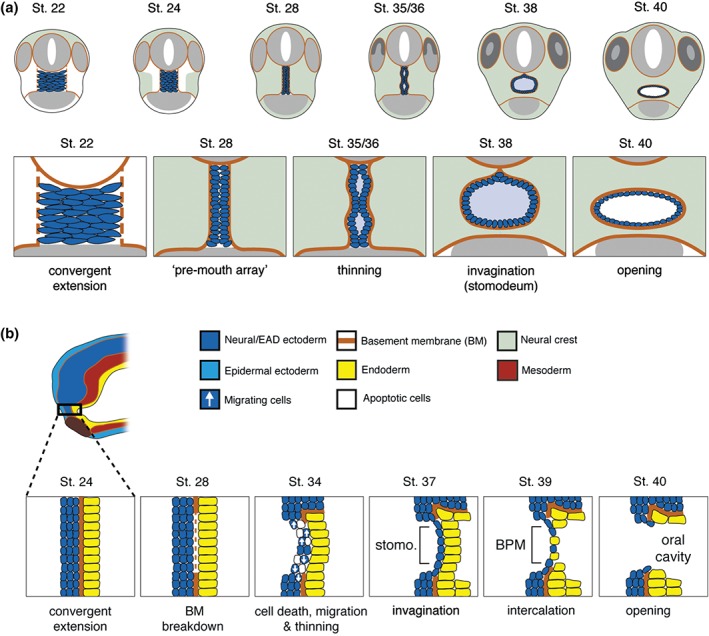Figure 6.

Steps in Xenopus mouth formation. (a) Coronal views of steps to mouth opening. Frontal views of the embryo are shown. The extreme anterior domain (EAD) begins at early tailbud (st. 22) as a wide, short block of cells. By late tailbud (st. 28), the neural crest (NC) migrates to lie on either side of the EAD. Signals from the NC initiate convergent extension in the EAD so that it forms a pre‐mouth array. Apico‐basal polarity is established in the pre‐mouth array, which separates down the midline to form the stomodeum at hatching stages (st. 35/36), that opens into the mouth at tadpole stage (st. 40). NC is in light green. (b) Sagittal views of steps to mouth opening. The EAD from a tailbud embryo showing different germ layers is enlarged in schematics below. Epidermal ectoderm is not shown in enlarged schematics. At late tailbud (st. 28), the pre‐mouth array forms by convergent extension, and the basement membrane (BM) between EAD ectoderm and endoderm disintegrates. The pre‐mouth array opens to form the stomodeal invagination. Stomodeal ectoderm thins concurrent with a burst of apoptosis and migration of ectoderm out of the region at hatching stages (st. 34–37). Intercalation of ectoderm and endoderm produces the buccopharyngeal membrane (BPM), which perforates to open the mouth at tadpole stages (st. 39–40).
